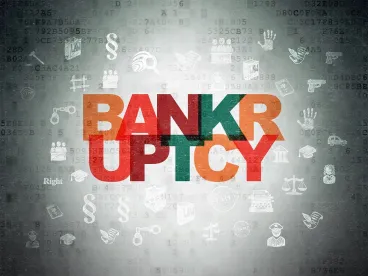Addressing a circuit split over a trademark licensee’s rights following a debtor/licensor’s bankruptcy, the US Bankruptcy Appellate Panel (BAP) for the First Circuit held that, although trademarks and trade names are not included in bankruptcy law’s definition of “intellectual property,” the licensee’s rights to use the licensor’s trademarks as set forth in the agreement were not terminated by the debtor’s rejection of the agreement. Mission Prod. Holdings, Inc. v. Tempnology LLC, Case No. 15-065 (BAP, 1st Cir., 2016) (Hoffman, J).
Tempnology and Mission Product Holdings were parties to an agreement granting Mission exclusive distribution rights for certain Tempnology products, a non-exclusive license for certain intellectual property (but not the trademarks), and a limited license to use certain trademarks during the term of the agreement. In September 2015, Tempnology filed for bankruptcy and shortly thereafter filed a motion asking the bankruptcy court to reject certain executory contracts, including the agreement with Mission, and allow Tempnology to sell its assets free and clear of liens, claims, encumbrances and other interests.
Under 11 USC § 365(a), a debtor may reject any executory contracts, subject to court approval. Section 365(n) protects intellectual property licensees by allowing them to elect to retain certain rights under the contract, despite the debtor’s rejection. In this case, the bankruptcy court ruled that Mission’s § 365(n) election did not protect its distribution rights or its right to use Tempnology’s trademarks. Further, it ruled that Tempnology was not required to bring an adversary proceeding against Mission to obtain relief. Mission appealed all three points.
On appeal, Mission argued that its exclusive product distribution rights were saved by its § 365(n) election because § 365(n) allows licensees to retain contractual rights, “including the right to enforce any exclusivity provision” and “any embodiment of such intellectual property.” The patented Tempnology products, Mission argued, were the embodiment of Tempnology’s intellectual property. The Court disagreed, stating, “Mission’s attempt to re-characterize its exclusive product distribution rights under the Agreement as an intellectual property license [is] unsupported by either the letter or the spirit of the Agreement.”
Turning to Tempnology’s trademarks, the Court stated that while the purpose of § 365(n) is to protect intellectual property licensees, bankruptcy law’s definition of “intellectual property” does not include trademarks or trade names. Courts are thus split as to whether § 365(n) protects trademark licensees. Some courts reason that equity allows bankruptcy courts to decide on a case-by-case basis whether trademark licensees may retain their rights, while other courts find that the omission of trademarks from the definition means that trademark licensees are not afforded any protection by § 365(n). Ultimately, the First Circuit BAP took a third approach, following the US Court of Appeals for the Seventh Circuit’s interpretation, holding that Mission’s rights to use the trademarks were not protected by its § 365(n) election, but that Tempnology’s rejection of the Agreement did not “vaporize Mission’s trademark rights under the Agreement.” As such, “[w]hatever post-rejection rights Mission retained in the Debtor’s trademark and logo are governed by the terms of the Agreement and applicable non-bankruptcy law.”
Last, Mission argued that the bankruptcy court should not have determined the § 365(n) motion without first requiring Tempnology to commence an adversary proceeding. The Court disagreed, explaining that because the dispute was over the scope of Mission’s rights, and not its ownership of certain property, the bankruptcy court did not err in deciding the motion without requiring an adversary proceeding.
Practice Note: This case indicates that a trademark license’s contractual provisions governing the licensee’s rights following a breach may also serve to protect the licensee when a licensor files for bankruptcy.




 />i
/>i

